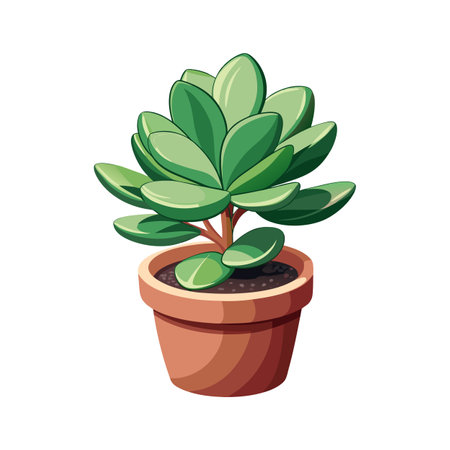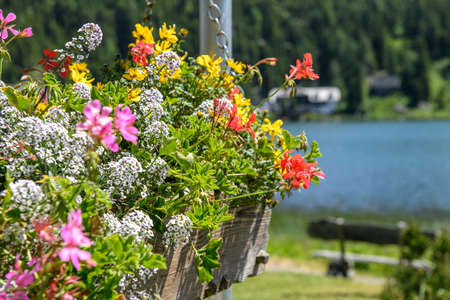Introduction to Exotic Herbs and Their Appeal
In recent years, British gardeners have shown a growing fascination with cultivating exotic herbs—those aromatic plants not traditionally found in the UK’s native or long-established kitchen gardens. The term ‘exotic’ generally refers to herbs originating from warmer or more distant regions, such as lemongrass, Thai basil, Vietnamese coriander, and kaffir lime. These herbs are prized for their vibrant flavours, unique fragrances, and the ability to transform everyday home-cooked meals into culinary adventures that reflect global cuisines.
For many, the allure of growing exotic herbs lies in both culinary curiosity and the challenge of nurturing something out of the ordinary within the British climate. The surge in interest is partly driven by an increasingly diverse food culture in the UK, as well as a desire among gardeners to experiment with new plant varieties and techniques. However, these non-native plants often require different care compared to familiar herbs like parsley or rosemary. They may demand higher temperatures, more humidity, or specialised soil conditions—factors that can be difficult to replicate outdoors in Britain’s cool and often unpredictable weather.
Despite these challenges, successfully growing exotic herbs offers a sense of accomplishment and rewards gardeners with fresh ingredients that are often hard to find in local shops. Container gardening has emerged as an effective solution, allowing enthusiasts to create microclimates and move their plants indoors during cold snaps. This adaptability opens up new possibilities for urban gardeners with limited space and for anyone eager to bring a taste of the tropics to their own doorstep.
Choosing the Right Containers and Compost
When it comes to cultivating exotic herbs in the often unpredictable British climate, selecting the correct containers and compost is paramount for both plant health and ease of care. The right choices help mitigate challenges such as erratic rainfall, persistent dampness, and occasional cold snaps—factors that can quickly undo your efforts if not managed thoughtfully.
Containers: Materials, Drainage, and Size
British weather, notorious for its wet spells, makes drainage a top priority. Terracotta pots are classic but dry out quickly during rare heatwaves; conversely, plastic containers retain moisture but may cause waterlogging during soggy stretches. Consider using lightweight frost-proof resin planters or glazed ceramic pots as a happy medium—they insulate roots against temperature swings and resist cracking in a cold snap. Whatever material you choose, ensure every pot has ample drainage holes. Place crocks or gravel at the base to further aid water escape, especially vital for Mediterranean herbs like lemongrass or Vietnamese coriander that dislike sitting in wet feet.
Container Comparison Table
| Material | Pros | Cons | Best For |
|---|---|---|---|
| Terracotta | Breathable; classic look | Prone to drying; cracks in frost | Drier microclimates; indoor use |
| Plastic | Lightweight; holds moisture | Can overheat roots; less attractive | Moisture-loving exotics; exposed spots |
| Ceramic/Glazed | Good insulation; decorative | Heavier; costlier | Larger specimens; patio displays |
| Resin/Fibreglass | Frost-proof; light; durable | May fade over time | All-purpose outdoor use |
Selecting the Ideal Compost Mix for Exotics
The typical British garden centre multi-purpose compost might not always meet the needs of exotic herbs, many of which prefer well-draining conditions akin to their native habitats. For most tropical or sub-tropical herbs—such as Thai basil or curry leaf—blend equal parts multi-purpose compost, horticultural grit, and John Innes No. 2. This mix strikes a balance between nutrient retention and sharp drainage. For moisture-loving exotics like Vietnamese coriander, add more organic matter (such as leaf mould) to help retain water without becoming boggy.
Suggested Compost Mixes by Herb Type:
| Herb Type | Main Requirements | Recommended Mix (by volume) |
|---|---|---|
| Mediterranean/Tropical (e.g., Lemongrass) | Free-draining, light nutrients | 1 part multi-purpose compost, 1 part grit/perlite, 1 part John Innes No. 2 |
| Moisture-Loving (e.g., Vietnamese Coriander) | Nutrient-rich, retains some moisture | 2 parts compost, 1 part leaf mould/coir, 1 part sand/grit |
| Aromatic Woody Herbs (e.g., Curry Leaf) | Slightly acidic, sharp drainage needed in winter | 1 part ericaceous compost, 1 part grit/perlite, 1 part John Innes No. 2/3 |
Ultimately, matching your container and compost choice to both herb preference and local weather quirks will give your exotics a fighting chance—and make watering routines far less of a gamble when the forecast turns unpredictable.

3. Selecting Suitable Exotic Herb Varieties
When embarking on the journey of cultivating exotic herbs in containers within British climates, choosing the right varieties is fundamental to success. The unique weather patterns of the UK—characterised by moderate temperatures, frequent rainfall, and limited sunshine—demand thoughtful selection. Not all tropical or Mediterranean herbs will thrive equally well, so its essential to match species with the microclimate provided by your garden, balcony, or windowsill.
Understanding Temperature Tolerance
Exotic herbs often originate from regions with much warmer and more stable climates than those found across the British Isles. Therefore, opt for varieties that can tolerate cooler night-time temperatures or are amenable to being brought indoors during cold snaps. Lemongrass (Cymbopogon citratus), for example, responds well to container life as long as it is protected from frost. Kaffir lime and curry leaf plants also adapt if kept indoors during winter months.
Managing Humidity and Rainfall
The persistent dampness of British weather can be a double-edged sword: while it keeps soil moist, it may promote root rot in herbs adapted to drier habitats. Herbs such as Vietnamese coriander (Persicaria odorata) and shiso (Perilla frutescens) actually appreciate higher humidity levels and can flourish here if drainage is carefully managed. Using free-draining compost and ensuring pots don’t sit in waterlogged saucers is crucial.
Navigating Limited Sunlight
The often overcast skies can pose a challenge for sun-loving exotics. However, many herbs are surprisingly adaptable if placed in south-facing spots or under grow lights. Thai basil (Ocimum basilicum var. thyrsiflora) prefers as much direct light as possible but will still perform reasonably well in partial shade when grown in containers.
Recommended Varieties for UK Container Gardens
Based on these considerations, some of the best candidates for container cultivation in the UK include lemongrass, Vietnamese coriander, kaffir lime (grown primarily for its leaves), curry leaf plant, shiso, and Thai basil. These species not only offer unique flavours but also display resilience when given attentive care tailored to local conditions.
Selecting wisely at this stage helps ensure healthy growth throughout the season, maximising both your harvests and your enjoyment of growing something truly out of the ordinary right at home in Britain.
4. Optimising Microclimates for Exotic Herbs
Growing exotic herbs in British climates can be challenging due to unpredictable weather and lower average temperatures, especially when your chosen varieties demand warmth and shelter. Fortunately, container gardening offers flexibility to create microclimates that suit these tender, heat-loving plants—even if you’re limited to a patio, balcony, or windowsill. Below are some practical strategies to help you modify your growing conditions for success.
Choosing the Right Location
Start by assessing the sunniest spots available. South-facing aspects typically receive the most sunlight in the UK and are ideal for Mediterranean or tropical herbs like basil, lemongrass, or Vietnamese coriander. If outdoor space is limited, even a sunny windowsill can suffice. Consider the following factors:
| Location Type | Sunlight Exposure | Shelter from Wind/Rain |
|---|---|---|
| Patio (South-facing) | 6+ hours/day | Partial—add screens or fences for extra protection |
| Balcony | Variable—higher floors often get more sun but more wind | Install glass panels or use tall pots as windbreaks |
| Windowsill (Indoors) | Bright, direct light best; supplement with grow lights if needed | Total—indoors protects from both wind and rain |
Enhancing Warmth and Stability
The UK’s climate rarely provides consistent warmth. Here are some ways to keep containers warmer and more stable:
- Pots on Wheels or Trays: Move containers to catch the most sunlight or shelter them from sudden weather changes.
- Cloches and Mini Greenhouses: Use clear plastic domes, cold frames, or even upcycled PET bottles to trap heat around sensitive herbs overnight.
- Pebble Trays: Place pots on trays filled with pebbles and water to increase humidity—a boon for subtropical species.
- Thermal Mass: Group containers together or place against brick walls, which absorb daytime heat and release it slowly at night.
- Insulating Pots: Wrap containers in bubble wrap during cold snaps or use double-walled pots to buffer against temperature swings.
Sheltering from the Elements
Breezes and sudden downpours can stress delicate exotics. Shield plants using fences, trellises, or purpose-built screens. For balconies exposed to strong winds, consider mesh windbreak netting. On patios, cluster taller plants strategically as natural wind buffers.
Troubleshooting Common Microclimate Challenges
| Challenge | Solution |
|---|---|
| Lack of Sunlight | Add mirrors/reflective surfaces; supplement with LED grow lights indoors. |
| Dampness/Mould Risk | Avoid overwatering; ensure good drainage; improve air circulation with small fans if indoors. |
| Sporadic Heatwaves | Provide temporary shade (e.g., garden fleece); water early morning or late evening. |
| Sustained Cold Snaps | Bring pots inside temporarily; double-wrap containers; apply mulch over soil surface. |
Summary Tip: Observing & Adjusting Regularly
No two growing spaces are identical—microclimate modification is an ongoing process. Monitor your herbs’ performance weekly and make incremental changes. Over time, you’ll learn which interventions work best for your unique British container garden environment.
5. Managing Watering and Feeding in British Weather
Successfully cultivating exotic herbs in containers across the UK hinges on mastering irrigation and nutrition routines tailored to our famously unpredictable climate. While many exotic herbs originate from warmer, more stable regions, British summers can be cool and wet, creating unique challenges for container gardeners.
Adapting to Rainfall Variability
British weather is notorious for its sudden downpours and extended spells of drizzle. Containers drain faster than garden beds, yet excessive rain can still lead to waterlogged roots. To counter this, use pots with ample drainage holes and raise them slightly off the ground to prevent standing water. It’s best practice to monitor rainfall closely—consider a simple rain gauge—and only water when the top inch of compost feels dry to the touch. This reduces the risk of root rot, particularly for Mediterranean or tropical herbs that dislike soggy conditions.
Optimising Irrigation Techniques
Hand watering gives you precise control, but it’s easy to overdo it after a hot day or forget during cooler spells. Drip irrigation kits are a solid investment for those managing multiple containers. They offer steady moisture without flooding roots—a real asset during unexpected heatwaves or when away for a weekend. For extra insulation against erratic temperatures, mulching with fine gravel or bark chips helps retain moisture without suffocating roots.
Nutritional Needs in Containers
Exotic herbs in pots quickly exhaust available nutrients, especially after frequent summer showers leach minerals from the compost. A balanced liquid feed applied fortnightly during the growing season works well for most herbs. Look for feeds with added magnesium and trace elements; these support vigorous growth even if sunlight is sporadic. For leafy exotics like Vietnamese coriander or shiso, a nitrogen-rich feed encourages lush foliage, while woody herbs such as curry leaf benefit from lower nitrogen but higher potassium and phosphorous levels.
Practical Feeding Tips
When feeding, always follow label instructions and avoid fertilising dry soil—water first to prevent root burn. During cool spells when growth slows, reduce feeding frequency; too much fertiliser at low temperatures can stress plants rather than help them.
Final Thoughts
The secret to thriving exotic herbs in British containers lies in attentive observation: adjust your watering and feeding routines based on both the weather forecast and your plants’ daily appearance. With patience and a willingness to experiment, you’ll soon find the right balance for healthy, flavourful harvests even under grey UK skies.
6. Overwintering and Year-Round Care
Successfully growing exotic herbs in containers within the British climate hinges on a thoughtful approach to overwintering and ongoing care. The UK’s winters, although milder than some northern regions, can still pose a significant threat to tender plants, especially during unexpected cold snaps or prolonged damp conditions. Here’s how you can protect your container-grown exotics and maintain their vigour throughout the year.
Winter Protection Strategies
For most exotics, frost is the primary enemy. As soon as temperatures threaten to dip towards zero degrees Celsius, it’s time to take action:
Bring Containers Indoors
If possible, move your most vulnerable herbs—such as lemongrass, curry leaf plant, or Thai basil—into a conservatory, unheated greenhouse, or even a bright windowsill. This small shift can make all the difference when overnight frosts strike.
Insulate Pots Outdoors
If indoor space is limited, insulate pots by wrapping them in horticultural fleece, bubble wrap, or even old blankets. Elevate containers off cold ground using pot feet or bricks to reduce the risk of root freeze and improve drainage during wet spells.
Use Cloche or Cold Frames
A cloche or cold frame offers excellent protection for less mobile containers. These simple structures shield plants from harsh winds and sudden temperature drops while allowing light penetration.
Year-Round Maintenance Tips
Caring for exotics doesn’t end with winter survival; it’s about sustaining healthy growth throughout every season.
Monitor Watering Carefully
British winters are notoriously damp. Reduce watering frequency in the colder months and ensure pots never sit in waterlogged saucers to prevent root rot—a common problem with containerised herbs.
Feed Appropriately
Resume feeding in early spring with a balanced liquid fertiliser once active growth restarts. During autumn and winter, hold back on feeding as most exotics slow down or enter dormancy.
Pest and Disease Vigilance
Container-grown exotics may attract aphids, spider mites or fungal diseases under glass or indoors. Inspect leaves regularly and act quickly at the first sign of trouble—removing affected foliage and treating organically if possible.
Typical UK Winter Precautions
The unpredictable nature of British weather means readiness is key. Keep fleece handy for sudden cold snaps, check local forecasts regularly, and be prepared to shuffle containers into sheltered spots at short notice. With careful attention to overwintering and consistent year-round maintenance, you’ll give your exotic herbs the best chance to thrive—even through the chilliest of UK winters.
7. Harvesting, Using, and Enjoying Your Exotic Herbs
Timing your harvest is crucial for getting the most flavour from your exotic herbs grown in British containers. As a general rule, pick leaves just before the plant flowers, when their essential oils are at their peak. For tender herbs like Thai basil or Vietnamese coriander, snip leaves as needed with clean scissors in the morning after dew has dried—this preserves both taste and freshness. Woody herbs such as lemongrass should be harvested once stalks are thick and robust; simply cut close to the base. Regular harvesting also encourages bushier growth and prolongs the productive season, especially in our unpredictable UK weather.
Incorporating Exotic Herbs into British Meals
Once you’ve gathered your bounty, the real fun begins: bringing these vibrant flavours into your kitchen. Try adding torn kaffir lime leaves to a classic fish pie for an aromatic twist, or mixing chopped shiso into cucumber sandwiches for an unexpected burst of freshness at afternoon tea. Lemongrass can infuse homemade cordial or even brighten up a gin and tonic. Coriander and Thai basil liven up traditional roast vegetables or can be stirred through butter for melting over grilled fish.
Preserving Surplus Herbs
If you find yourself with more than you can use fresh—a common success story for container gardeners—consider drying or freezing excess leaves. Freeze chopped herbs in ice cube trays with water for easy additions to soups and stews, or dry whole sprigs in a warm airing cupboard for winter use.
Celebrating Homegrown Diversity
Growing exotic herbs in containers not only brings new scents and tastes to your British home but also invites experimentation. Swap out parsley for Vietnamese coriander in egg mayonnaise, or add holy basil to your Sunday roast marinade. The possibilities are endless, limited only by your curiosity and appetite.


